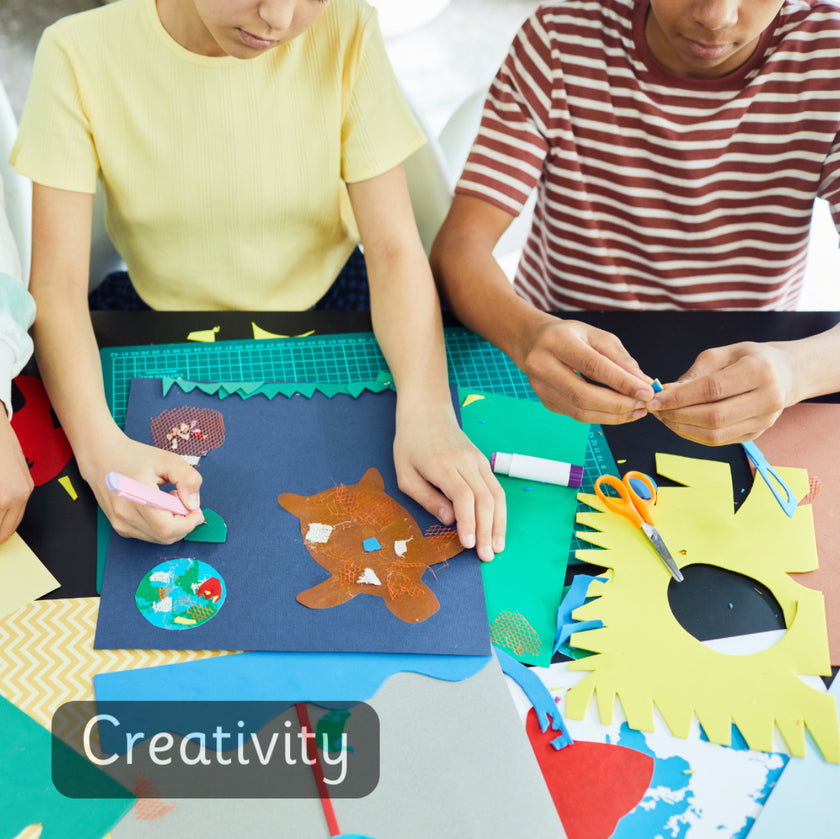In today's digital age, it can be a real challenge to keep kids engaged without turning to screens. However, fostering creative play without the use of electronic devices is not only possible but also incredibly beneficial for their development. This blog will explore several effective strategies to encourage creative play, offering a wealth of ideas that will keep kids entertained and learning.

The Importance of Creative Play
Creative play is essential for children's growth. It helps them develop critical thinking, problem-solving skills, and emotional intelligence. Additionally, it encourages imagination and innovation, building a foundation for future learning and success.
1. Create a Dedicated Play Space
Having a specific area for play can significantly enhance a child's ability to engage in creative activities. This space doesn't need to be large or extravagant. A corner of a room with a few basic supplies can be enough. Stock this area with:
- Art supplies: Crayons, markers, paints, paper, scissors, and glue.
- Building materials: Blocks, LEGO sets, and other construction toys.
- Dress-up clothes: Old costumes, hats, scarves, and accessories.
- Musical instruments: Simple tools like tambourines, maracas, or a small keyboard.
2. Outdoor Adventures
Nature is a fantastic catalyst for creativity. Encourage kids to spend time outside where they can explore and invent their own games. Here are some ideas:
- Nature scavenger hunts: Create a list of items for kids to find, like specific leaves, rocks, or flowers.
- Building forts: Use sticks, leaves, and other natural materials.
- Gardening: Let them plant flowers or vegetables and take care of their own garden.
3. Arts and Crafts
Arts and crafts are a wonderful way to let kids express their creativity. These activities can range from simple projects to more complex endeavors. Here are a few suggestions:
- Painting and drawing: Provide various tools and mediums, such as watercolors, chalk, and colored pencils.
- Sculpting with clay: Allow them to create their own sculptures and figures.
- DIY projects: Encourage them to make their own toys, decorations, or gifts.
4. Storytelling and Role-Playing
Children have vivid imaginations that can be harnessed through storytelling and role-playing. These activities not only entertain but also develop language and social skills.
- Storytime: Read books together and then encourage them to create their own stories.
- Puppet shows: Use puppets or even socks to put on performances.
- Dress-up and role-play: Let them pretend to be different characters or professionals, like chefs, doctors, or astronauts.
5. Music and Dance
Music and dance are excellent for physical activity and creative expression. Encourage kids to explore different types of music and create their own dances.
- Dance parties: Have regular dance sessions with different genres of music.
- Instrument exploration: Let them try out different instruments and see which ones they enjoy.
- Singing: Encourage them to sing along to their favorite songs or make up their own.
6. Building and Construction
Building things is a fantastic way to engage children in creative play. It helps them understand basic engineering principles and encourages problem-solving.
- Block play: Use wooden blocks, LEGO, or other building sets.
- DIY construction projects: Simple projects like birdhouses or cardboard castles can be great fun.
- Sandcastles: If you have access to a sandbox or beach, building sandcastles can be a delightful activity.
7. Science Experiments
Simple science experiments can be incredibly engaging and educational. They spark curiosity and encourage kids to ask questions and seek answers.
- Volcano eruptions: Use baking soda and vinegar to create a mini volcano.
- Plant growth: Plant seeds and watch them grow over time.
- Magnifying glass exploration: Use a magnifying glass to examine insects, leaves, and other small objects up close.
8. Board Games and Puzzles
Board games and puzzles are fantastic for developing strategic thinking and problem-solving skills. They also provide an opportunity for family bonding.
- Classic board games: Games like Monopoly, Scrabble, and Clue are great for older kids.
- Simple games: For younger children, games like Candy Land or Chutes and Ladders are perfect.
- Puzzles: Choose age-appropriate puzzles to challenge and entertain.
9. Cooking and Baking
Cooking and baking are not only fun but also educational. They teach kids about measurements, following instructions, and healthy eating.
- Simple recipes: Start with easy recipes like cookies, cupcakes, or smoothies.
- Decorating: Let them decorate their creations with icing, sprinkles, and other toppings.
- Kitchen experiments: Try making homemade playdough or slime.
10. Reading and Writing
Encouraging a love for reading and writing can greatly enhance a child's creativity. These activities expand their vocabulary and improve their communication skills.
- Reading aloud: Regularly read books together and discuss the stories.
- Writing stories: Encourage them to write their own stories, poems, or even comic strips.
- Journaling: Provide them with a journal to write about their day or their thoughts.
Encouraging creative play without screen time is not only possible but also incredibly beneficial for children's development. By providing them with a variety of activities and the freedom to explore their imaginations, you can help them develop essential skills and a lifelong love of learning. Remember, the goal is to make playtime fun and engaging, so don't be afraid to join in and let your own creativity shine!



 DimpleBee.
DimpleBee.